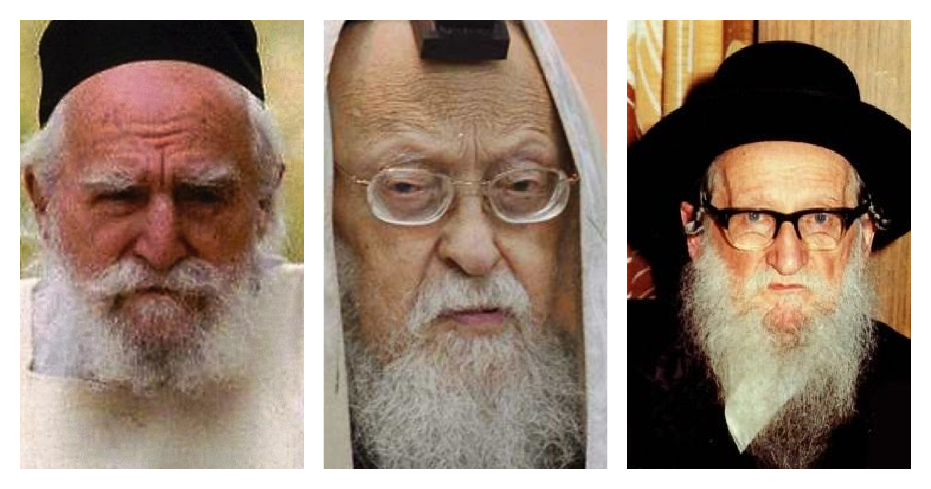The Shul Candyman and the 10th Halachic Question
By Rabbi Yair Hoffman for 5tjt.com
L’Ilui Nishmas the Author’s mother, Sara Bas HaRav Eliyahu, on her 15th Yahrtzeit, 22 Av
It is one of the few issues that unite the Chareidi right-wing Torah community and the Vegan community. Not that we will soon see a January 6th type of protest in front of the White House with Vegans and Chassidim marching side by side down protesting.
But they are united in this area – as we will soon see.
Earlier, we had discussed 9 Halachic issues that pertain to the Shul Candyman. We now present a 10th issue.
The tenth issue of the “candyman” is actually a 3-way debate between Rav Moshe Feinstein zatzal, Rav Elyashiv zatzal, , and Dayan Yitzchok Weiss zatzal.
Satmar and most Kosher supervisions in Lakewood, New Jersey are machmir. The same is true with the Rabbanut of Israel and the Eida HaChareidis in Yerushalayim. And at least two local Five Town Far Rockaway synagogues have forbidden it. Hisachdus forbids it, and the OU allows it.
The 10th Halachic question is as follows: Are Mike & Ikes that contain “confectioners’ glaze” kosher? May a shul candyman give them out?
This is the issue that unites the vegan and Chareidi right-wing Torah community.
The UK based VeganFriendly.org has the following quote on their website: For those arriving here for an answer to the question “is shellac vegan?” – well, the answer is an emphatic “no”. Shellac comes from the female lac bug, an insect; insects are animals (specifically they are hexapod invertebrates of the arthropod phylum within the biological kingdom Animalia!); therefore, shellac is NOT vegan.
Confectioner’s glaze is produced through the use of a particular beetle called Kerria Lacca.
But let us start at the beginning. Kerria Lacca beetles are found in the jungles of south-east Asia. It is more commonly called the lac beetle — of shellac fame. She is found covering numerous foods — particularly chocolates, Mike and Ikes, Cinnamon flavored Hot Tamales, and shiny fruits. [Some apple suppliers use shellac as the wax while others use Carnauba wax — which is not beetle based.]
THE PROCESS
Farmers in southeast Asia and in Mexico obtain sticks of Kerria Lacca eggs that are ready to hatch. The farmers attach these sticks to trees that are to be infested. The beetles hatch and colonize the branches of the host trees.
Let us watch her for a few minutes. There she stands inserting herself into these branches in small cavernous tunnels, sucking out the sap and some bark for sustenance. Soon she will begin secreting a much sought after resin – in order to traverse the branches of the tree. The resin is called sticklac.
There are 150 Kerra Lacca beetles per square inch, after they hatch. The resin is collected by workers. It is heated and then filtered. Body parts and bark parts are removed.
SHELLAC
The end product is known as Shellac. Alcohol is added to it, and it becomes an ingredient in many food grade glazes. This glaze is placed on thousands of products — including candies, chocolates, and fresh waxed fruit.
The glaze is actually made out of sugar and gum Arabic, but the shine doesn’t last too long. To give the shine some longevity, the glaze-makers add in some shellac. Shellac is added to many New York State apples, chocolates, and other glazes. To make the glaze, the Shellac is mixed with four or five parts of alcohol.
NOT A NEW ISSUE
The issue is not a new issue. What is new is that a growing number of organizations and people are taking the more stringent view. Why this has happened is another issue. But few can deny that the matter is of growing concern.
THE THREE WAY DEBATE
The debate seems to be a three-way debate between Rav Moshe Feinstein zt”l, Rav Elyashiv zt”l, and Dayan Weiss zt”l. It concerns the Kashrus of confectioner’s glaze and other food resins that are used on hundreds of food products, including apples and candy, and come from beetles.
RAV FEINSTEIN’S VIEW
Rav Moshe Feinstein zt”l (Igros Moshe YD II #24) in a letter dated January 18th, 1965 to Rabbi Nachum Kornmill, the former Rabbi of the Young Israel of Lawrence Cedarhurst in the Five Towns, cites four reasons why shellac should be permitted:
– The process regarding Lac beetles seems no different than bee honey — where the product is produced outside of the main body of the insect. The Beis Yoseph seems to extend one type of honey to another type of honey — therefore we can perhaps also extend this to shellac production from beetles.
– Rav Feinstein also suggests that Shellac would be included within the verse that is understood to specifically come to permit bee honey since there is only one type of Shellac (as opposed to many types of honey). The verse, argues Rav Feinstein zt”l, permits the product of all flying things that do not require name identification by species. Shellac does not require this because there is only one type of shellac.
– Rav Feinstein disagrees with the view of Rabbi Joseph Teumim (the Pri Magadim) who writes that even a non-kosher item with no taste still requires a ratio of sixty times the amount of kosher to non-kosher in order for it to be considered kosher. Rav Feinstein suggested that this view is incorrect.
– Rav Feinstein dealt with the possibility that this Shelac is not ingested into the body at all and is therefore not forbidden.
THREE POINTS OF RAV FEINSTEIN ZT”L HAVE BEEN QUESTIONED
At least three of Rav Feinstein’s four points have come under great scrutiny and debate among some circles in the Rabbinic world. The first point is questioned because Rav Feinstein needs to change the girsah or wording of the Talmud in order to make this argument. Some question this because there is no indication of this change in any manuscript or Rabbinic work. There are also over 100 different types of coccoid beetles that produce different lac products. Rabbis also question his other points as well (See volume III of Rav Yechezkel Roth’s responsa book).
DAYAN WEISS’S VIEW
The next view is that of Dayan Yitzchak Weiss zt”l. He writes in a responsum dated May 7th, 1986 (Minchas Yitzchok Vol. X #65) that there would be basis to permit it based upon the fact the Shellac is only added for Chazussah — appearance and even then it may fall into the category of zeh vazeh gorem — two items both being a cause of it. Furthermore, he rules that the halacha is in accordance with the Pri Chadash that in regard to matters of appearance we are only dealing with a Rabbinic issue and not a Torah prohibition. The fact that it is mixed with a greater percentage of alcohol may make the prohibiton null and void. However, he concludes that due to our lack of a depth of knowledge into the properties and nature of Shellac — he is unable to permit it.
RAV ELYASHIV’S VIEW
Finally, the third view is that of Rav Elyashiv zt”l. He writes in Kovetz Teshuvos (Vol 1 #73) that according to the ruling of the Mordechai and Rabbeinu Gershom — the leniency of the external product of a forbidden animal would only have applied to an animal or creature that the surrounding population generally consumes. Beetles, however, are not generally consumed — therefore that which comes from it (the Shellac) would still be forbidden.
HAS THE WORLD CHANGED SINCE RAV ELYASHIV’S RESPONSUM?
One can perhaps challenge the information presented to Rav Elyashiv ztazal in terms of whether or not the beetles are eaten by the general population or not. Beetles are the most popular insect in the world. There are some 3.5 billion people in China, India and Africa consuming them.
THE ICKY FACTOR
While it could be argued that Rav Elyashiv’s point would not apply in those countries, there is a huge icky factor in western countries. Thus, in the United States, Canada, and in Israel — they would still be forbidden. Nonetheless, there are 36 African countries that are “entomophagous” – as are 23 in the Americas, 29 in Asia, and 11 in Europe. Clearly, we are moving toward a more entomophagous society. The United Nations in New York has also called for more and more beetle and insect consumption.
It could be that with the rise in immigration from bug consuming countries, Rav Elyashiv’s stringency would no longer be applicable. It seems, however, that most of the organizations and Rabbis who have ruled stringently on the matter also do so because of Dayan Weiss’ hesitations as well as questions that they had on Rav Moshe’s ruling. Some have also argued that Rav Feinstein zt”l was the Posaik of America and since he permitted it, how may anyone come to question his ruling?
Of course each person should consult his own Rabbi as to what to do in regard to Kerria Lacca. But whatever one’s personal views on the matter, at the end of the day, many schools, shuls and entire communities are now strictly adhering to this standard to avoid Kerria Lacca. The vegan community is also interested in a replacement product and many in that world have stopped eating this product opting for a corn-based item instead.
CANDYMEN APPLICATION
So the question is – may a candyman give out Mike & Ikes in shul? (Yes, there is a leniency of sefiyah b’yadaim on a derabanan but this is a topic that may be explored later.) Whatever halachic position one adheres to, however, it is important never to embarrass anyone, In particular, we should never embarrass the Shul candyman – a heroic individual who has enabled generations and generations of children to love shul and has developed in our youth – an intense pride in Judaism. We end with a quote (more or less) from Rav Moshe Feinstein zt”l.
“In the early part of the wave of Jewish immigration to this country from Europe, people would krechtz, ‘Oy!! Es is shver tzu zein a yid!’ But this was a very wrong attitude and it ended in teeming masses of Yidden leaving shmiras Shabbos. The correct attitude is ‘It is is beautiful and joyous to be a yid!; and if our children see that – they will remain adhering faithfully to their birthright of Torah.”
The candy man is to be hailed as a person who helps bring Rav Moshe Feinstein’s ideal to reality.
The author can be reached at [email protected]












2 Responses
Some of the candy men are predators and/or have alterior motive.
Bklyntrucker, why would you start off with the negative here?
99.99% of candy men are doing it leshaim shomayim, and are not predators, and get huge zechusim for what they do.
There’s a time and place for everything, we’re in the weeks following Tisha b’av, let’s try to practice ahavas chinam and focus on the 99.99% positive and not on the .01% negative.
Gut Shabbos.